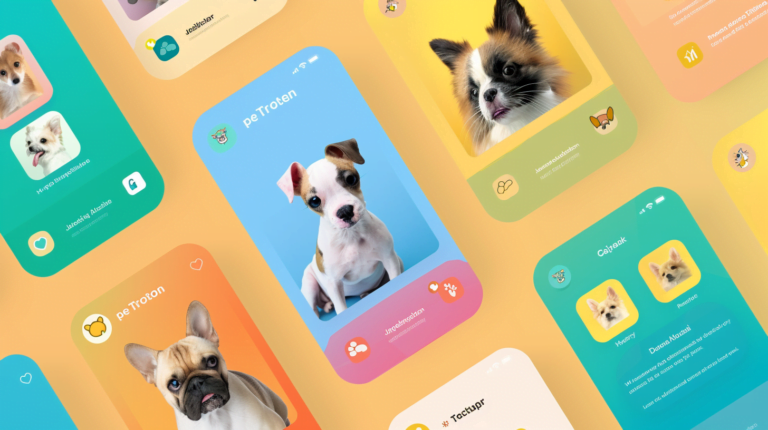Native | Cross | Hybrid | PWA(Web-app) | Mobile App Development
Native Apps
Native apps are software applications designed and developed for a specific mobile operating system (OS), such as iOS or Android. These apps are created using platform-specific programming languages and development tools. For example, native iOS apps are typically coded in Swift or Objective-C, while native Android apps use Java or Kotlin.
Pros of Native Apps
Native apps offer several advantages. First and foremost is their superior performance and responsiveness. Since they are optimized for a particular platform, they can take full advantage of the device’s hardware and software, resulting in faster load times and smooth interactions. This high performance is crucial for resource-intensive applications, like games or complex productivity tools.
Another advantage is their access to native device features. Native apps can seamlessly integrate with the device’s camera, GPS, accelerometer, and other sensors, allowing developers to create highly interactive and feature-rich applications. This access to hardware-specific functionalities can lead to a more immersive user experience.
Furthermore, native apps tend to excel in terms of user interface (UI) design. Developers can leverage platform-specific UI components and design guidelines, ensuring that the app looks and feels native to the device. This contributes to a more intuitive and aesthetically pleasing user experience.
Cons of Native Apps
Despite their many benefits, native apps also have their drawbacks. One of the most significant disadvantages is the higher development cost and time associated with building separate versions for each platform (iOS and Android). Maintaining two codebases means increased development effort, which can translate to higher costs.
Additionally, native apps are subject to the app store approval process, which can introduce delays in getting updates and new features to users. Both Apple’s App Store and Google Play Store have stringent review guidelines, and any violations can result in app rejection or removal, leading to additional development time.
Choosing between native and other app development approaches depends on project requirements, budget, and target audience.
Cross-Platform Apps
Cross-platform apps, also known as hybrid apps, are applications developed using a single codebase that can run on multiple mobile platforms, such as iOS and Android. Instead of writing separate code for each platform, developers use cross-platform frameworks and tools to build once and deploy to multiple platforms.
Examples of popular cross-platform frameworks include React Native, which uses JavaScript and React, and Flutter, which uses Dart. These frameworks allow developers to create a shared codebase while providing native-like performance and user experiences.
Pros of Cross-Platform Apps
Cross-platform apps offer several advantages. First and foremost is the accelerated development process, resulting in cost savings and shorter time-to-market. With a shared codebase, developers can write, test, and maintain code more efficiently, reducing development costs.
Code reusability across platforms is another significant advantage. Developers can reuse a substantial portion of the codebase when targeting multiple platforms, ensuring consistency in functionality and design. This not only speeds up development but also simplifies maintenance and updates.
Cross-platform development benefits from a wide developer community and ample resources. Frameworks like React Native and Flutter have active communities, providing access to a wealth of libraries, plugins, and documentation. This support ecosystem makes it easier to find solutions to common development challenges.
Cons of Cross-Platform Apps
Despite their advantages, cross-platform apps have limitations. One of the most significant drawbacks is that they may not achieve the same level of performance as native apps. While cross-platform frameworks aim to provide native-like performance, some complex or resource-intensive apps may experience performance bottlenecks.
Another limitation is limited access to certain native features. While cross-platform frameworks offer access to many native APIs, they may not cover all device-specific functionalities. In cases where an app heavily relies on unique or advanced native features, a native approach may be more appropriate.
Additionally, cross-platform apps can face challenges when adapting to platform-specific updates. When iOS or Android releases new features or design guidelines, cross-platform frameworks may need time to catch up, potentially delaying the integration of these updates into your app.
Choosing a cross-platform approach is ideal for projects where development efficiency and cost-effectiveness are paramount, but it’s important to consider performance and access to native features based on your app’s requirements.
Hybrid Apps
Hybrid apps are a unique blend of web technologies (HTML, CSS, JavaScript) and native app elements. These apps are built using web technologies but are wrapped in a native container, which allows them to be installed and run on a mobile device like a native app. Apache Cordova (formerly known as PhoneGap) and the Ionic framework are examples of popular tools used to develop hybrid apps.
Hybrid apps essentially run a web application within a native webview, providing a balance between web development and native app functionality.
Pros of Hybrid Apps
Hybrid apps offer several advantages. One of the most significant is that they allow developers to maintain a single codebase while targeting multiple platforms. This can result in significant cost savings and faster development timelines compared to fully native development.
Developers can also access some native features through plugins, enabling hybrid apps to integrate with device hardware and software. While not as extensive as native apps, this level of access is often sufficient for many application types.
Hybrid apps can be particularly appealing for organizations that have expertise in web development since they can leverage existing web development skills and technologies.
Cons of Hybrid Apps
Despite their advantages, hybrid apps have their limitations. Performance can be a concern, especially for complex applications. Since hybrid apps run within a webview, they may not deliver the same level of performance as fully native apps, particularly for graphics-intensive or real-time applications.
Another limitation is limited access to advanced native features. While plugins can provide access to certain device capabilities, not all native features are available through this method. This can restrict the functionality of hybrid apps, particularly for applications that rely heavily on unique device features.
Dependency on webviews can also lead to user experience challenges. Differences in how webviews render content and handle interactions can result in inconsistencies across platforms. Achieving a truly native look and feel can be challenging with hybrid apps.
In summary, hybrid apps are a suitable choice when development speed, cost efficiency, and code reuse are priorities. They offer a middle-ground solution between native and web development, but performance and access to certain native features should be carefully considered based on the specific requirements of the project.
Progressive Web Apps (PWAs)
Progressive Web Apps, often abbreviated as PWAs, are a relatively new type of web application that offers an app-like experience within a web browser. They are designed to provide users with the best of both worlds: the accessibility of a website and the features of a native app.
PWAs are built using standard web technologies like HTML, CSS, and JavaScript but include additional features and technologies to enhance their functionality. They can be accessed through a browser like any other website but can also be installed on a user’s home screen, making them accessible like a native app.
Pros of PWAs
PWAs offer several compelling advantages. One of their standout features is cross-platform compatibility. They work on any device with a modern web browser, including desktops, smartphones, and tablets. This cross-device functionality ensures a broader reach for your application.
Another significant advantage is that PWAs do not require app store approval. Unlike native apps, which must go through an app store review process, PWAs can be deployed and updated directly through web servers. This simplifies distribution and reduces delays in getting updates to users.
PWAs also benefit from improved search engine optimization (SEO) and discoverability. Since they are web-based, their content is easily indexable by search engines, making it easier for users to find and access the app through organic search results.
Cons of PWAs
While PWAs offer many benefits, they also have limitations. One of the most significant limitations is limited access to some native features. While they can leverage device capabilities like geolocation or camera access, they may not have the same level of access as native apps. This can impact the functionality of certain apps that heavily rely on these features.
Another limitation is that PWAs may not match the performance of fully native apps, particularly for resource-intensive applications like high-end mobile games. Native apps can take full advantage of device hardware, while PWAs operate within the constraints of web browsers.
Finally, PWAs may have limited offline functionality. While they can work offline to some extent through service workers and caching, they may not provide the same seamless offline experience as fully native apps.
In summary, PWAs are an excellent choice for projects where broad accessibility and easy distribution are priorities. They are particularly well-suited for content-driven applications, e-commerce websites, and progressive enhancements of existing web applications. However, considerations of performance and access to native features should be weighed based on the specific needs of the project.
Considerations for Choosing an Approach
When it comes to choosing the right app development approach—native, cross-platform, hybrid, or PWA—several key considerations come into play:
Project Budget: Evaluate the available budget for your project. Native development can be costlier due to the need for separate codebases, while cross-platform, hybrid, and PWAs often offer cost-effective alternatives.
Timeline: Consider your project’s timeline. If you need to deliver the app quickly, cross-platform and hybrid development approaches can offer significant time savings.
Target Audience: Understand your target audience and the platforms they predominantly use. If your audience primarily uses one platform (iOS or Android), you might prioritize native development for a more tailored experience.
Required Features: Assess the specific features your app needs. Native development offers the most extensive access to device-specific features, while cross-platform, hybrid, and PWAs may have limitations in this regard.
Developer Expertise: Take into account the expertise of your development team. If your team has experience with a particular development approach or framework, leveraging that expertise can be advantageous.
Use Cases for Each Approach
To help you make an informed decision, here are some common use cases for each app development approach:
– Native Apps: Native development is ideal for apps that require the highest performance, extensive access to native features (e.g., games, augmented reality apps), and a platform-specific design that aligns closely with iOS or Android guidelines.
– Cross-Platform Apps: Cross-platform development is well-suited for apps that need to reach both iOS and Android audiences while maintaining a single codebase. It’s a cost-effective approach for many business and productivity apps.
– Hybrid Apps: Hybrid development is suitable for applications that prioritize development speed and cost efficiency and are not heavily reliant on complex native features. It’s often used for apps with content-centric interfaces, such as news or blogs.
– PWAs: PWAs are an excellent choice for content-driven applications, e-commerce websites, or situations where broad accessibility is crucial. They provide a web-based experience with the potential for installation on users’ home screens.
Ultimately, the right choice depends on your project’s unique requirements and constraints. Consider your goals, budget, timeline, and target audience, carefully when making your decision.







